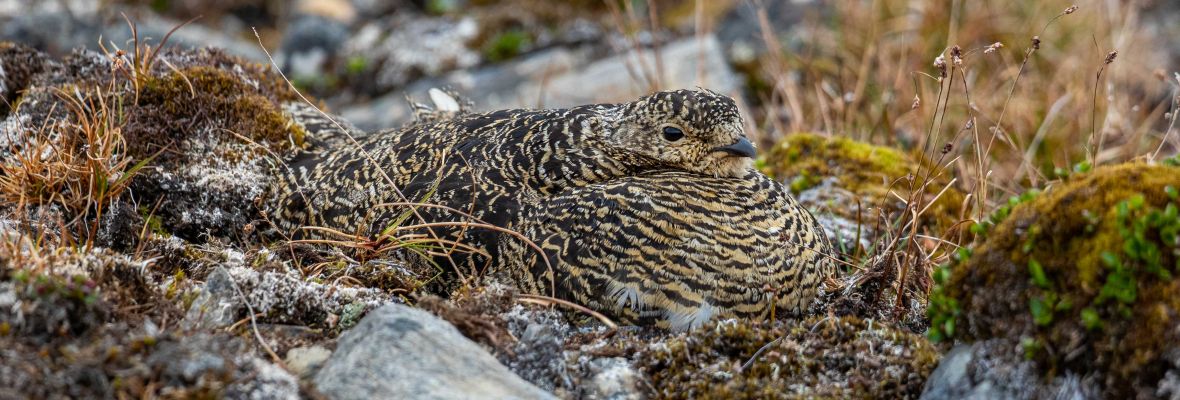What does a Rock Ptarmigan look like?
Some of the most distinctive rock ptarmigan characteristics are a small head, round body, feathered legs and short, rounded wings. Additionally, another rock ptarmigan adaptation for survival in the wild is their seasonal plumage changes.
- Winter: Both sexes are pure white with black tails and beaks for camouflage in the snow.
- Summer: Females turn fully brown to blend with the tundra landscape. Males retain white areas on their stomach and wings, the back is grey with small dark and light spots, and has a red patch over the eyes.
Where do Rock Ptarmigan live?
The rock ptarmigan's habitat is the tundra and remote mountainous regions across the Arctic and sub-Arctic. During winter, it is the only terrestrial bird that stays in Svalbard and one of the few animals that remain in Greenland, which is possible due to its insulating plumage.
How big is a Rock Ptarmigan?
Considered as one of the largest land birds in Svalbard, an adult rock ptarmigan ranges from 31 to 38 cm (12.2–15 in) in length with a wingspan of 50 to 60 cm (19.7–23.6 in) and weighs 500 to 700 g (17.6–26.5 oz).
What do Rock Ptarmigan eat?
The rock ptarmigan diet is primarily vegetarian, including buds, leaves, berries, and seeds. During the summer months, the female rock ptarmigan also eats insects.
What eats Rock Ptarmigan in the tundra?
The rock ptarmigan predators include owls, Arctic foxes, lynxes, glaucous gulls and Arctic skuas.
What is the lifespan of a Rock Ptarmigan?
The rock ptarmigan's lifespan is short, usually 3 to 5 years. This is due to the large amount of predators.
What are the key Rock Ptarmigan adaptations?
For this bird to thrive in the Arctic's cold weather, it must have be adapted to this environment for survival.
- Insulating plumage, even on the legs and feet.
- Seasonal color changes (white in winter, brown/grey in summer).
- Burrowing into the snow to stay warm during winter.
- Ability to stay active and non-migratory even during the polar night.



